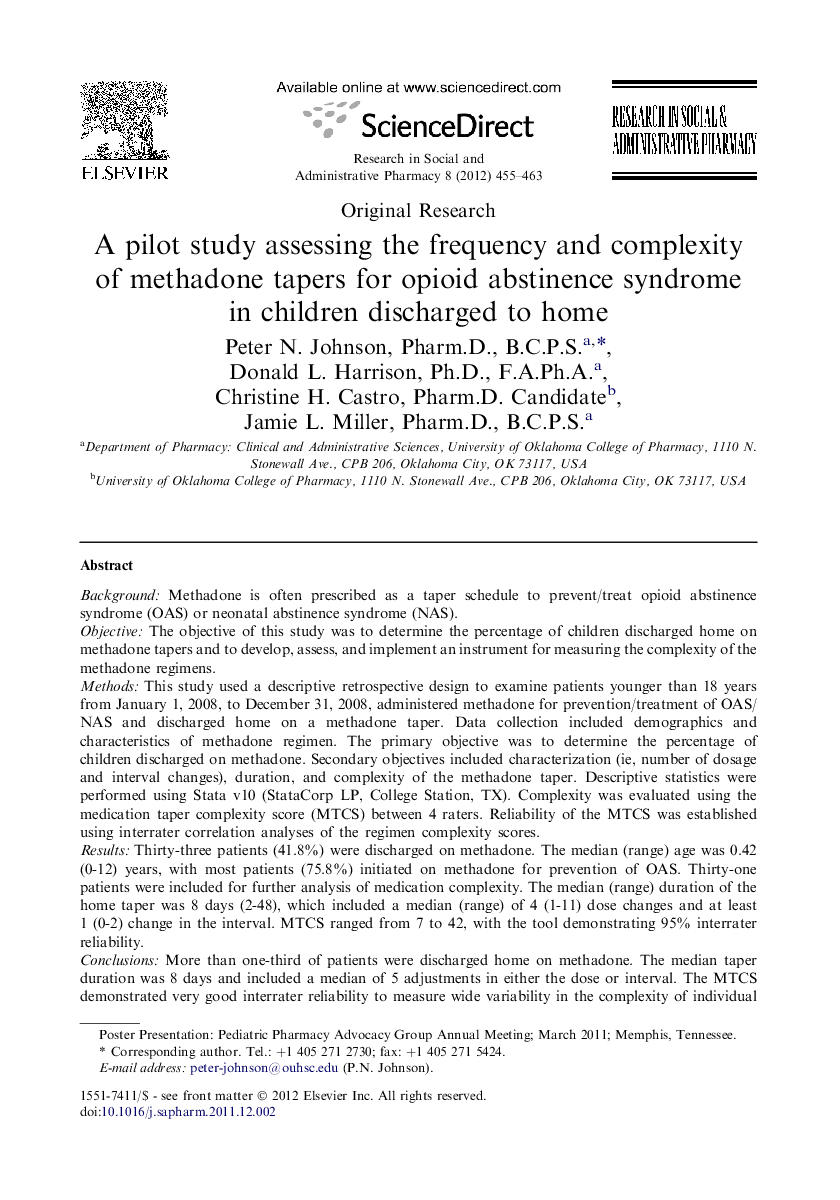| Article ID | Journal | Published Year | Pages | File Type |
|---|---|---|---|---|
| 2508897 | Research in Social and Administrative Pharmacy | 2012 | 9 Pages |
BackgroundMethadone is often prescribed as a taper schedule to prevent/treat opioid abstinence syndrome (OAS) or neonatal abstinence syndrome (NAS).ObjectiveThe objective of this study was to determine the percentage of children discharged home on methadone tapers and to develop, assess, and implement an instrument for measuring the complexity of the methadone regimens.MethodsThis study used a descriptive retrospective design to examine patients younger than 18 years from January 1, 2008, to December 31, 2008, administered methadone for prevention/treatment of OAS/NAS and discharged home on a methadone taper. Data collection included demographics and characteristics of methadone regimen. The primary objective was to determine the percentage of children discharged on methadone. Secondary objectives included characterization (ie, number of dosage and interval changes), duration, and complexity of the methadone taper. Descriptive statistics were performed using Stata v10 (StataCorp LP, College Station, TX). Complexity was evaluated using the medication taper complexity score (MTCS) between 4 raters. Reliability of the MTCS was established using interrater correlation analyses of the regimen complexity scores.ResultsThirty-three patients (41.8%) were discharged on methadone. The median (range) age was 0.42 (0-12) years, with most patients (75.8%) initiated on methadone for prevention of OAS. Thirty-one patients were included for further analysis of medication complexity. The median (range) duration of the home taper was 8 days (2-48), which included a median (range) of 4 (1-11) dose changes and at least 1 (0-2) change in the interval. MTCS ranged from 7 to 42, with the tool demonstrating 95% interrater reliability.ConclusionsMore than one-third of patients were discharged home on methadone. The median taper duration was 8 days and included a median of 5 adjustments in either the dose or interval. The MTCS demonstrated very good interrater reliability to measure wide variability in the complexity of individual tapers. Future studies should determine the construct validity of the MTCS and the applicability of this tool for further research and clinical application.
